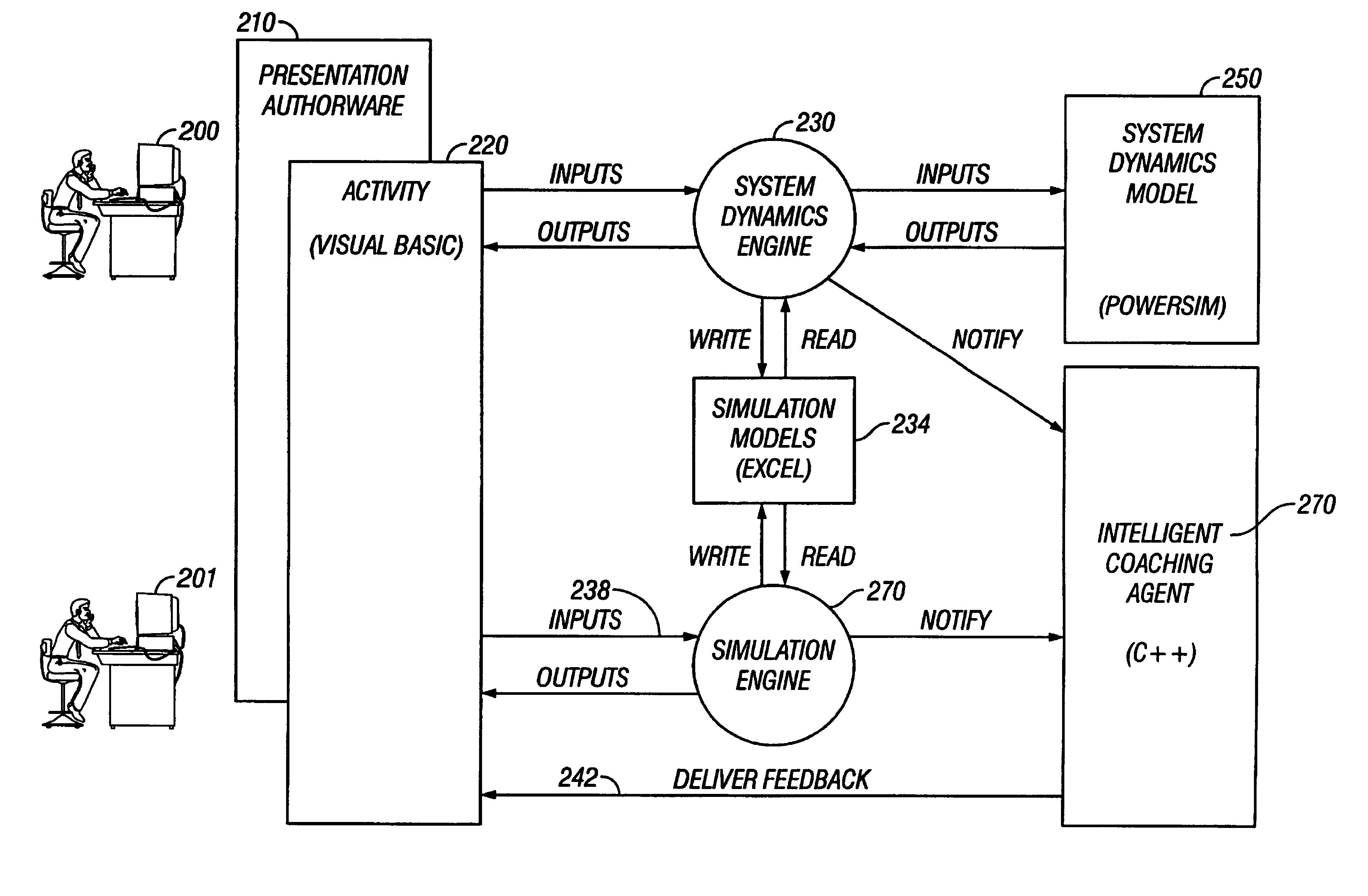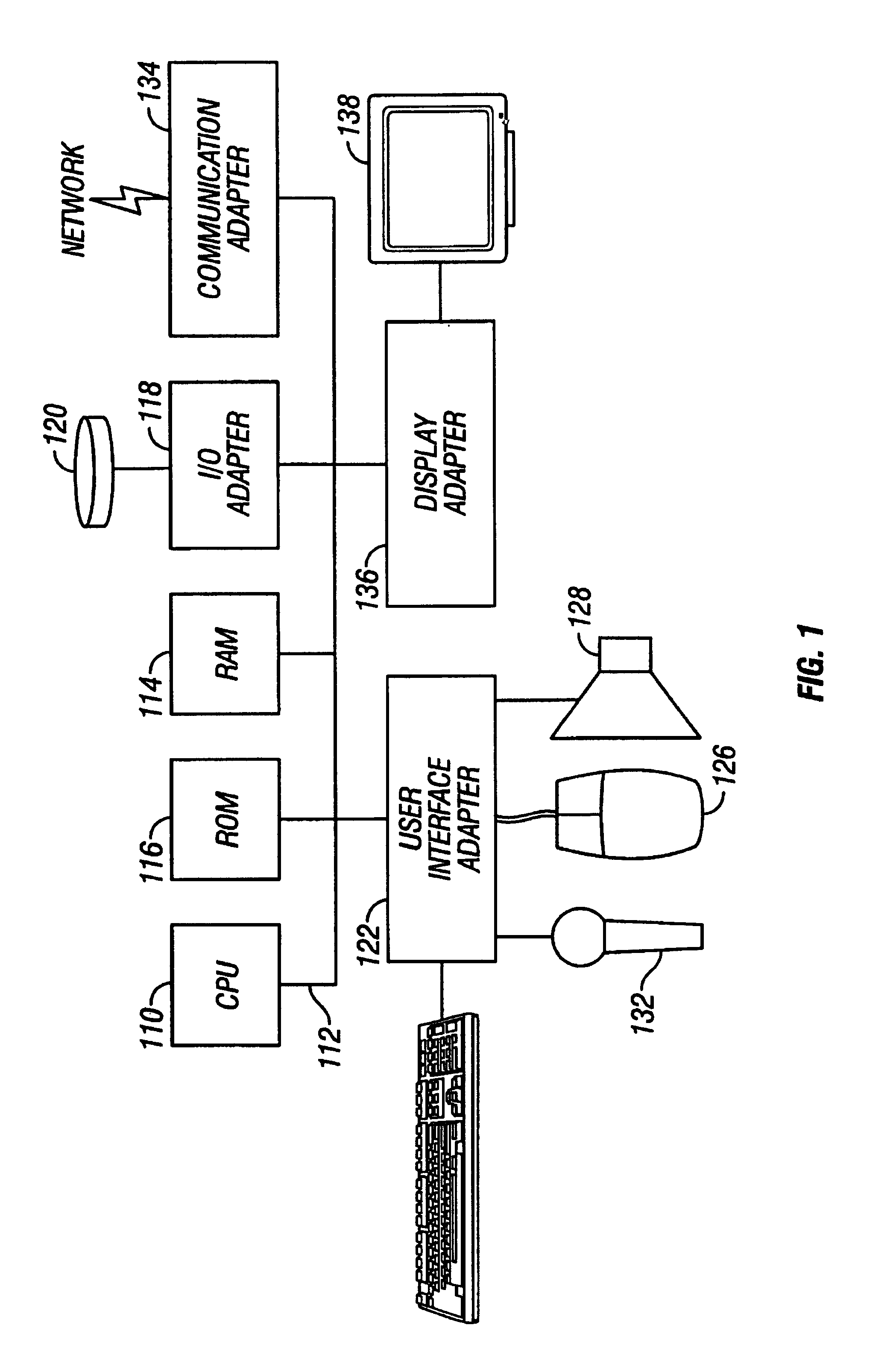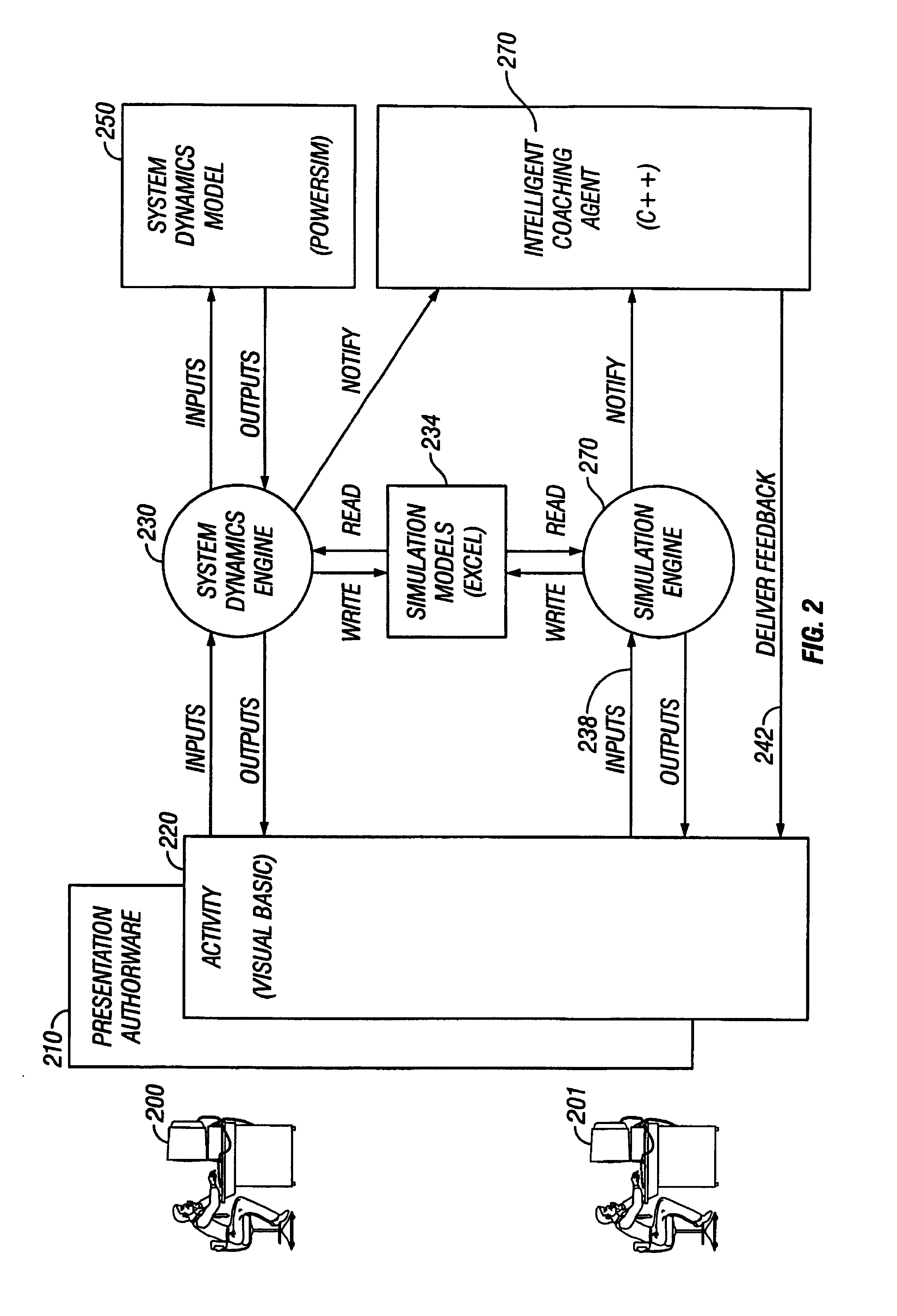Interactive simulations utilizing a remote knowledge base
a knowledge base and interactive simulation technology, applied in the field of education systems, can solve the problems of inability to provide feedback to the knowledge engineer from the expert system, inability to design the knowledge base, and inability to meet the needs of students,
- Summary
- Abstract
- Description
- Claims
- Application Information
AI Technical Summary
Benefits of technology
Problems solved by technology
Method used
Image
Examples
example domain
[0229]Creating a domain model in data rather than in code facilitates reuse of the components in multiple applications in multiple domains without code changes. For example, a typical application in the Financial Services domain would have to define classes in code such as ‘Customer’, ‘Account’, etc. An Insurance Domain application might have classes such as ‘Customer’, ‘Incident’, ‘Prior Policy’, etc. To be able to perform analysis on any of these classes, the analysis logic must be coded to recognize the classes. This requires all logic to be custom-coded for every application; an effort-intensive undertaking that demands a high degree of technical skill.
[0230]By modeling the domain in data using generic objects, we can build standard generic analysis capability that can be applied to the domain. This allows implementation of analysis logic with much less effort by people with a low degree of technical skill. Functional experts can create the objects of the domain and apply variou...
example profile
for Insurance Underwriting
Transformation Component
[0254]Whereas the Profiling Component asks questions about the domain, the Transformation Component performs calculations on the domain and feeds the results back into the domain for further analysis by the Profiling Component. This facilitates the modeling of complex business systems that would otherwise be very difficult to implement as part of the application. Within the Analysis phase of the Interface / Analysis / Interpretation execution flow, the Transformation Component actually acts on the domain before the Profiling Component does its analysis. The Transformation Component acts as a shell that wraps one or more data modeling components for the purpose of integrating these components into a BusSim application. The Transformation Component facilitates the transfer of specific data from the domain to the data modeling component (inputs) for calculations to be performed on the data, as well as the transfer of the results of the calc...
PUM
 Login to View More
Login to View More Abstract
Description
Claims
Application Information
 Login to View More
Login to View More - R&D
- Intellectual Property
- Life Sciences
- Materials
- Tech Scout
- Unparalleled Data Quality
- Higher Quality Content
- 60% Fewer Hallucinations
Browse by: Latest US Patents, China's latest patents, Technical Efficacy Thesaurus, Application Domain, Technology Topic, Popular Technical Reports.
© 2025 PatSnap. All rights reserved.Legal|Privacy policy|Modern Slavery Act Transparency Statement|Sitemap|About US| Contact US: help@patsnap.com



